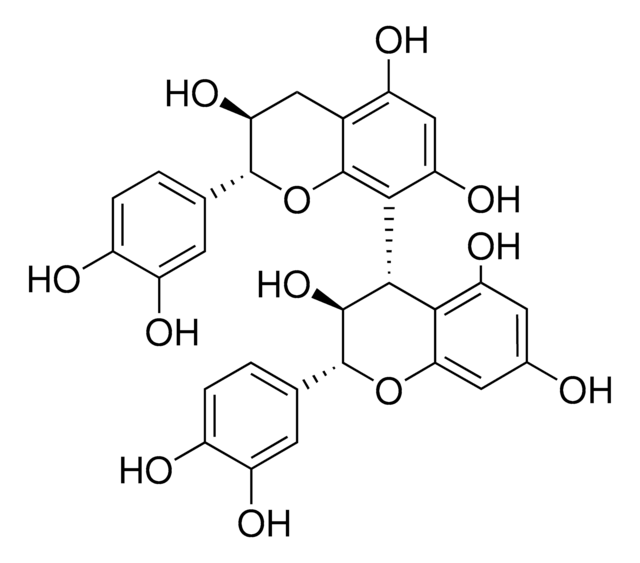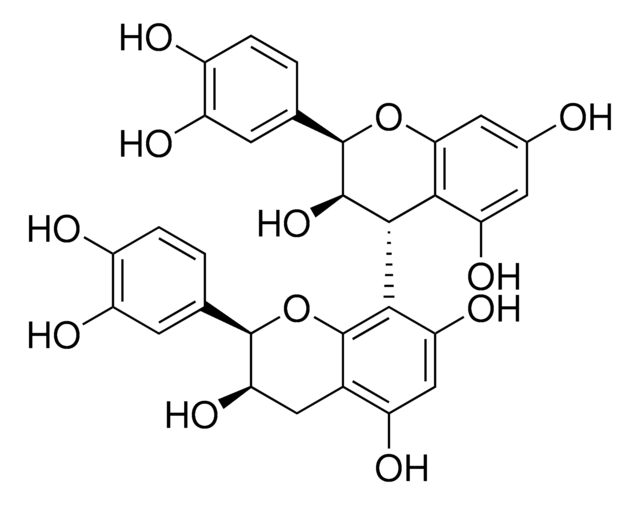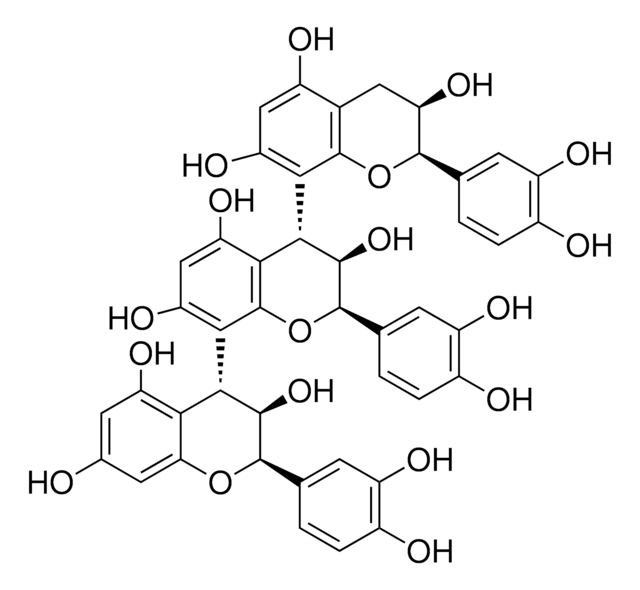19542
Procyanidin B1
analytical standard
Synonym(s):
(−)-Epicatechin (4β-8)-(+)-catechin, cis,trans′′-4,8′′-Bi-(3,3′,4′,5,7-Pentahydroxyflavane), Proanthocyanidin B1
About This Item
Recommended Products
grade
analytical standard
Quality Level
assay
≥90% (HPLC)
technique(s)
HPLC: suitable
gas chromatography (GC): suitable
application(s)
food and beverages
format
neat
storage temp.
2-8°C
SMILES string
O[C@H]1Cc2c(O)cc(O)c([C@@H]3[C@@H](O)[C@H](Oc4cc(O)cc(O)c34)c5ccc(O)c(O)c5)c2O[C@@H]1c6ccc(O)c(O)c6
InChI
1S/C30H26O12/c31-13-7-20(37)24-23(8-13)41-29(12-2-4-16(33)19(36)6-12)27(40)26(24)25-21(38)10-17(34)14-9-22(39)28(42-30(14)25)11-1-3-15(32)18(35)5-11/h1-8,10,22,26-29,31-40H,9H2/t22-,26+,27+,28+,29+/m0/s1
InChI key
XFZJEEAOWLFHDH-UKWJTHFESA-N
Looking for similar products? Visit Product Comparison Guide
Related Categories
General description
Application
Other Notes
Storage Class
11 - Combustible Solids
wgk_germany
WGK 3
flash_point_f
Not applicable
flash_point_c
Not applicable
ppe
Eyeshields, Gloves, type N95 (US)
Choose from one of the most recent versions:
Already Own This Product?
Find documentation for the products that you have recently purchased in the Document Library.
Customers Also Viewed
Articles
Antioxidants protect biological systems from oxidative damage produced by oxygen-containing free radicals and from redoxactive transition metal ions such as iron, copper, and cadmium.
Our team of scientists has experience in all areas of research including Life Science, Material Science, Chemical Synthesis, Chromatography, Analytical and many others.
Contact Technical Service









